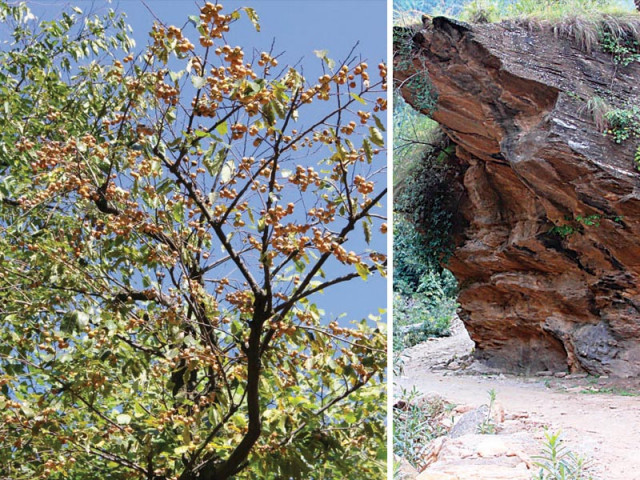In the rough: The area of Samsarey offers up plenty but has no takers
With no proper roads, locals have to struggle to even reach the hospital.

Wild fruit, including pomegranates, olives and figs, grow abundantly in Samarsarey but there are no roads to take them to markets. PHOTO: EXPRESS
It is Najigram town’s secret – an area called Samsarey where fruit grows uncultivated, inviting wildlife and (a few) tourists to come and sample. Unfortunately, say locals, it is also an area neglected by the government in spite of what it offers.
Located inside Najigram, some 12 kilometres (km) from Barikot, Samsarey is known for its vast archaeological remains of bygone Buddhist life. But there is little fame surrounding it for its natural beauty and abundance of wildlife – a lot of which remains completely unseen.
Latif Khan, a young resident, pointed out local persimmons, grapes, pomegranates, olives and figs grow easily and villagers also cultivate them but never sell them in the markets. “When guests or tourists come here, we offer the fruits as gifts. We have never thought of selling and nobody has come to buy the produce,” he told The Express Tribune

The little breached nook continues to support wild animals and birds with its abundance of fruit. “We have hundreds of monkeys here. They come down from the mountains in swarms, feast on fruits of the season and drink water before they return,” shared Latif.
A lack of means
But not everyone can clamber about like these primates. Fifty-year-old Hassan Khan complained there were no properly laid roads, causing much hardship. “Let alone the agricultural produce, we cannot even take our patients to hospitals in time. More often the serious cases die on the way as we have to carry them on our shoulders.”
“Despite its dazzling beauty, Samsarey has been neglected by authorities,” said Afzal Shah, a local activist. “It did not even have a road until people living here collected money and constructed a six-km-long dirt track, connecting it to Najigram. But only a four by four can traverse it.”
A lack of connectivity means few outsiders can access it, leaving even fewer chances of promoting tourism.
For agriculture expert Fazal Zahid, the best thing for the area would be proper preservation and conservation of its woodlands. “In addition to medicinal herbs and plants, the valley is full of non-timber products – the major produce being wild persimmon.”
The persimmon is organic and can survive for two years as it has the longest shelf live, Zahid said.
“But unfortunately, no benefit is gained from the fruit as there is no access to markets, no proper packaging or presentation,” he added. Others with expertise in agriculture claim with research and development, these persimmons would be in great demand in the European markets, bringing in income to develop the area.
Published in The Express Tribune, October 21st, 2013.













COMMENTS
Comments are moderated and generally will be posted if they are on-topic and not abusive.
For more information, please see our Comments FAQ